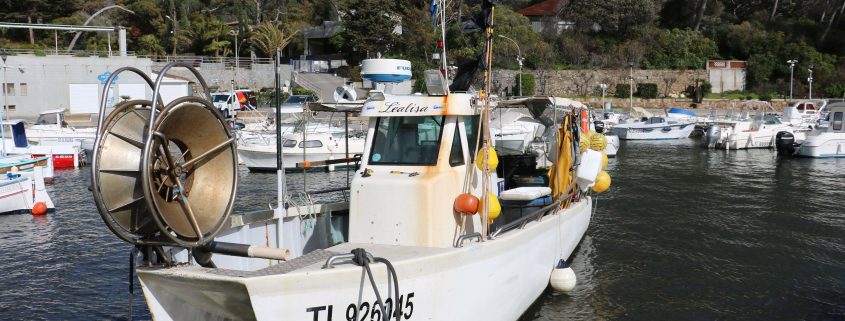The Bottarga is a regional specialty of Martigues,
and an old Provençal tradition that one worked at the time with eggs of sea bass. Today it is a pocket of mullet eggs, salted and dried.
The bottarga can be consumed nature but more generally it cooks itself. Because its flavor is complex, it must be used in simple dishes and recipes, much like truffles, in order to fully develop it. It can be eaten in thin slices, grated in a pasta dish, or on buttered toasts. In powder the bottarga is easier to integrate into your sauces because it mixes easily. You can also sprinkle a dish and perfume more evenly.
The bottarga can be stored in the fridge at the bottom of the refrigerator for about 6 months. It is advisable to wrap it well in a food film.
WHERE IS THE BOTTARGA MADE?
In France, it is a specialty of the city of Martigues and Port de Bouc. Like caviar, the bottarga has become a sought after and expensive dish, which has made bottarga a luxury product. It is always better to buy a whole poutargue (about 100 to 200 gr). Be careful not to buy a very thick layer of paraffin at this price.
ORIGIN OF THE BOTTARGA
At the time of the pyramids, the Egyptians already consumed it, but it is probable that it was the Phoenician seamen who made this product known all around the Mediterranean.
Others remind us that salted fish eggs were known in Roman antiquity and that the Romans imported them and considered them mostly as a Greek specialty that used to be used in the manufacture of the authentic Tarama.
In Provence, it was introduced by the Phoenicians when they founded Marseille in the 11th century BC. It is in Martigues (near Marseille), pretty little Provencal harbor lined with canals that has become an essential specialty. Be that as it may, no document mentions the bottarga in Provence before the sixteenth, then in the sixteenth. everyone starts talking about it. Rabelais actually consume hundreds in Pantagruel.
MANUFACTURING
Privilege of some fishermen and family businesses, its manufacture remains artisanal. Each bottarga consists of the pair of egg sacs, never dissociated, from mullet caught in the Mediterranean. Traditionally, it is at the moment when the mullet leaves the pond of Berre to go to spawn at sea that the fish are captured ‘in the passage’ with a horizontal net. The fishing period is an authorization from July 1 to March 1 (spring is reserved for the entry of fish in the pond of Berre). The full females are delicately picked and stored side by side, on the back, and on a single course row, of course. The removal of this double pocket which must absolutely not be injured is the most delicate phase of a very simple manufacturing. The mullet is incised with a sharp tool like a scalpel, so as not to hurt the viscera and the double pocket of which a simple thin film maintains the cohesion of the eggs.
The bags are rinsed with cold water, wiped and placed on a layer of salt. The pockets are already, at this stage, sorted by size because the duration of the salting, in order to make them disgorge, which is on average from 6 to 8 hours, depends on their size. During this phase, salting makes them lose their water, concentrates the aromas and promotes preservation by removing anaerobic bacteria from their environment. They lose on this occasion about 1/3 of their weight. They are then rinsed and stored between 2 boards of wood. There, during a second phase of drying in the sun or in ventilated shelves during 2 to 3 days, the bottarga receive a slight pressure and flatten regularly to obtain this form of characteristic rectangle. The exudation of salt is wiped off and they are then hung by the ‘pécou’ for a few days during which their flavor is refined and asserts itself. They can then begin to be consumed.
The color of these tiny grains is amber honey and the texture is supple. The color darkens with time at the same time as the dry and hardened bottarga.
They are, in handcrafted, simply presented in their sheath of origin, natural and transparent. The “industrial” dip them, in addition, in paraffin food which better ensures their preservation out of any oxidation in the air. Some use, more recently, beeswax.



